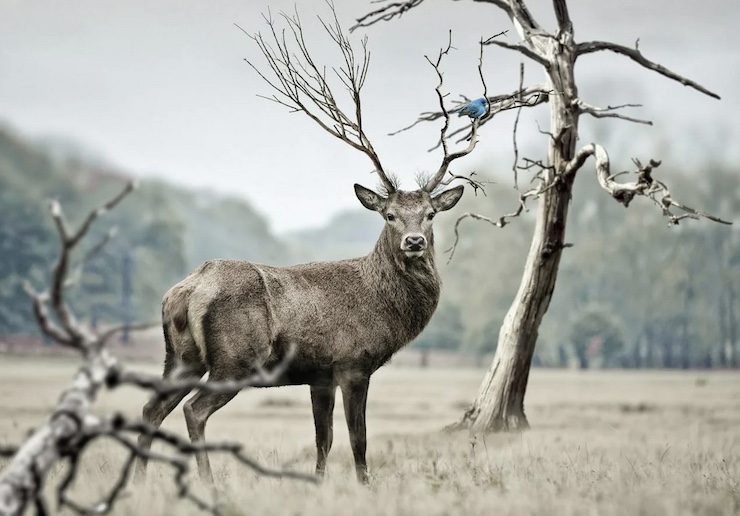Wildlife Detection Drones: How Effective Are They?

Can drones help wildlife conservationists improve their ability to protect endangered species, while enhancing their understanding of animal mating, migratory and reproduction patterns? Conservationists studying a wide range of land and marine life – from elephants and monkeys to sharks and dolphins – have often made such claims, while pointing to documented reductions in poaching and extinction rates. But, in fact, much of the evidence collected has been anecdotal and based on trends among small animal population groups in specific locales.
In a recent study, scientists at the University of Texas decided to put drones to the test. They conducted five separate comparisons of drones with other wildlife surveillance methods to see how well the UAVs performed. The tests compared the ability of drones, helicopter surveys and trail cameras to yield accurate population counts of white-tailed deer in different terrains ranging from thick bushlands to open grasslands.
The researchers found that the drones arrived at population estimates similar to those from trail camera and helicopter surveys, but in fact, estimates from repeated drone surveys proved to be more consistent than those from the helicopter surveys.
One issue flagged by the researchers was visibility bias. Helicopters sometimes missed deer hiding in the bush but even drones sometimes under counted the deer during hot weather because their thermal cameras couldn’t accurately distinguish the animals from their background. But drone surveillance was far cheaper to carry out than helicopter surveys and could be conducted more rapidly, and drones left a much smaller carbon footprint.
Collection time was also an issue with trail cameras; though highly accurate, this was a longer-term method, and it often required additional field collection time.
At one test site, the drones encountered difficulty flying over hilly territory and even on flatlands, the strong reflection from the sun at peak hours could block the ability of heat sensors to accurately estimate the deer count.
On balance, though, the drones throughout the study more than proved their value.
“We recommend that researchers conduct preliminary surveys and examine distributions of perpendicular distances to evaluate whether the targeted species and their environment is compatible with thermal drone surveys,” the researchers noted in their conclusion. “We found that in compatible environments, drone-based population estimates were precise, repeatable, and comparable with other population estimators.”
The researchers also suggested that future drone estimation research in south Texas include aerial surveillance of other animal groups that proliferate in the region, including collared peccary, coyotes and more exotic species such as feral swine and nilgai. “Thus, for drone surveys to be a valid population estimator for white-tailed deer, there need to be studies evaluating how well thermal cameras can distinguish white-tailed deer from other medium to large species on the [same] landscape,” the researchers noted.
An earlier study of drone surveillance of feral pigs conducted in Australia in 2023 found that weather and time of day could greatly affect the ability of drones to track animals in the wild. Dry weather and early evenings were preferable to early or mid afternoon conditions. Canopy cover and land cover could also affect the accuracy of animal detection estimates, the researchers found.
The Australian study recommended incorporating Animal Biotelemetry technology into drone wildlife surveillance to improve the ability to detect different species in different types of habitats under different land and weather conditions.
The findings of the recent Texas study were published in the March 20, 2024 issue of the Wildlife Society Bulletin. Results from the Australian study were summarized in the August 25, 2023 issue of Frontiers Conservation Science.
|